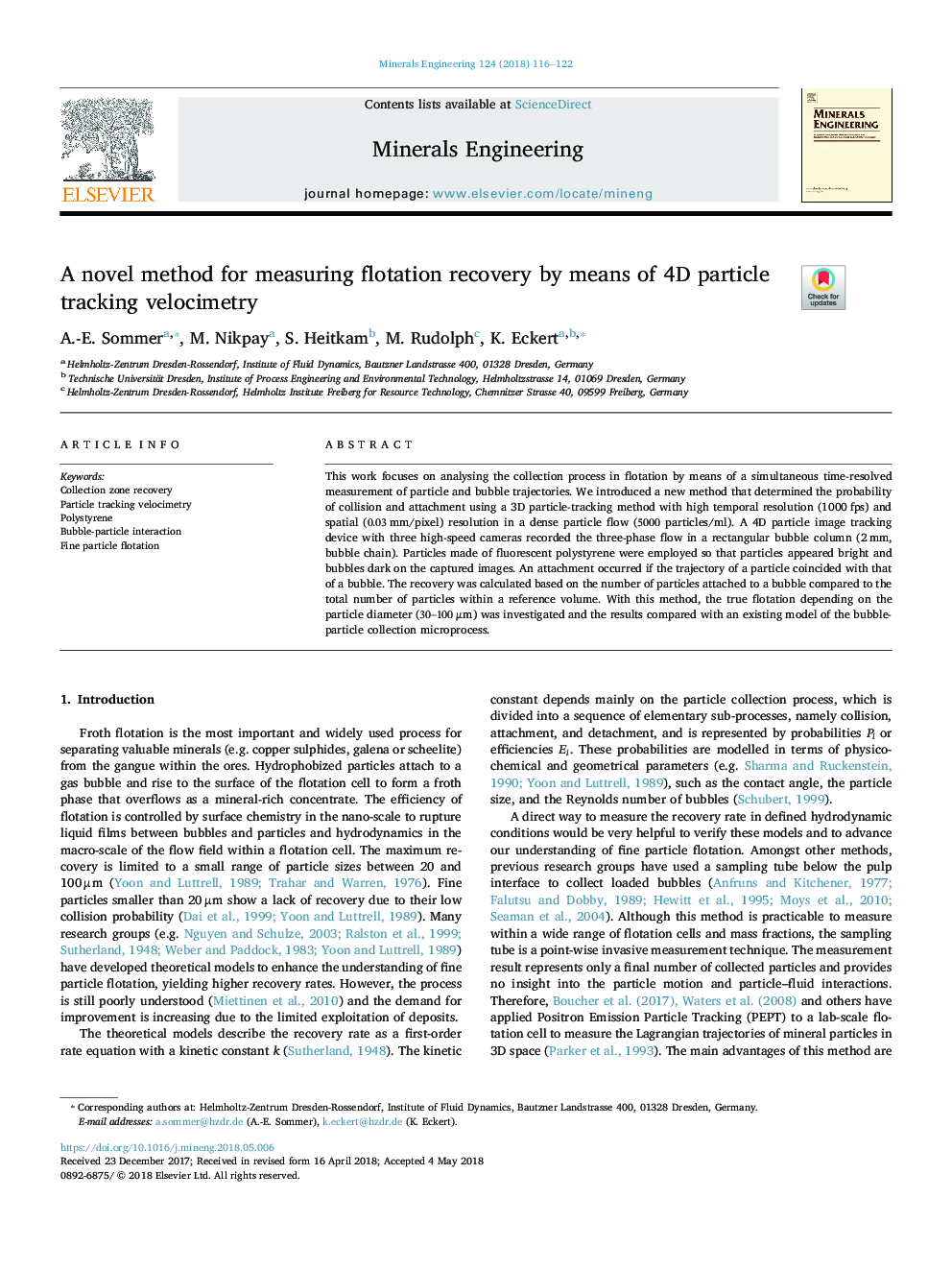| Article ID | Journal | Published Year | Pages | File Type |
|---|---|---|---|---|
| 6672223 | Minerals Engineering | 2018 | 7 Pages |
Abstract
This work focuses on analysing the collection process in flotation by means of a simultaneous time-resolved measurement of particle and bubble trajectories. We introduced a new method that determined the probability of collision and attachment using a 3D particle-tracking method with high temporal resolution (1000â¯fps) and spatial (0.03â¯mm/pixel) resolution in a dense particle flow (5000 particles/ml). A 4D particle image tracking device with three high-speed cameras recorded the three-phase flow in a rectangular bubble column (2â¯mm, bubble chain). Particles made of fluorescent polystyrene were employed so that particles appeared bright and bubbles dark on the captured images. An attachment occurred if the trajectory of a particle coincided with that of a bubble. The recovery was calculated based on the number of particles attached to a bubble compared to the total number of particles within a reference volume. With this method, the true flotation depending on the particle diameter (30-100â¯Î¼m) was investigated and the results compared with an existing model of the bubble-particle collection microprocess.
Related Topics
Physical Sciences and Engineering
Chemical Engineering
Chemical Engineering (General)
Authors
A.-E. Sommer, M. Nikpay, S. Heitkam, M. Rudolph, K. Eckert,
